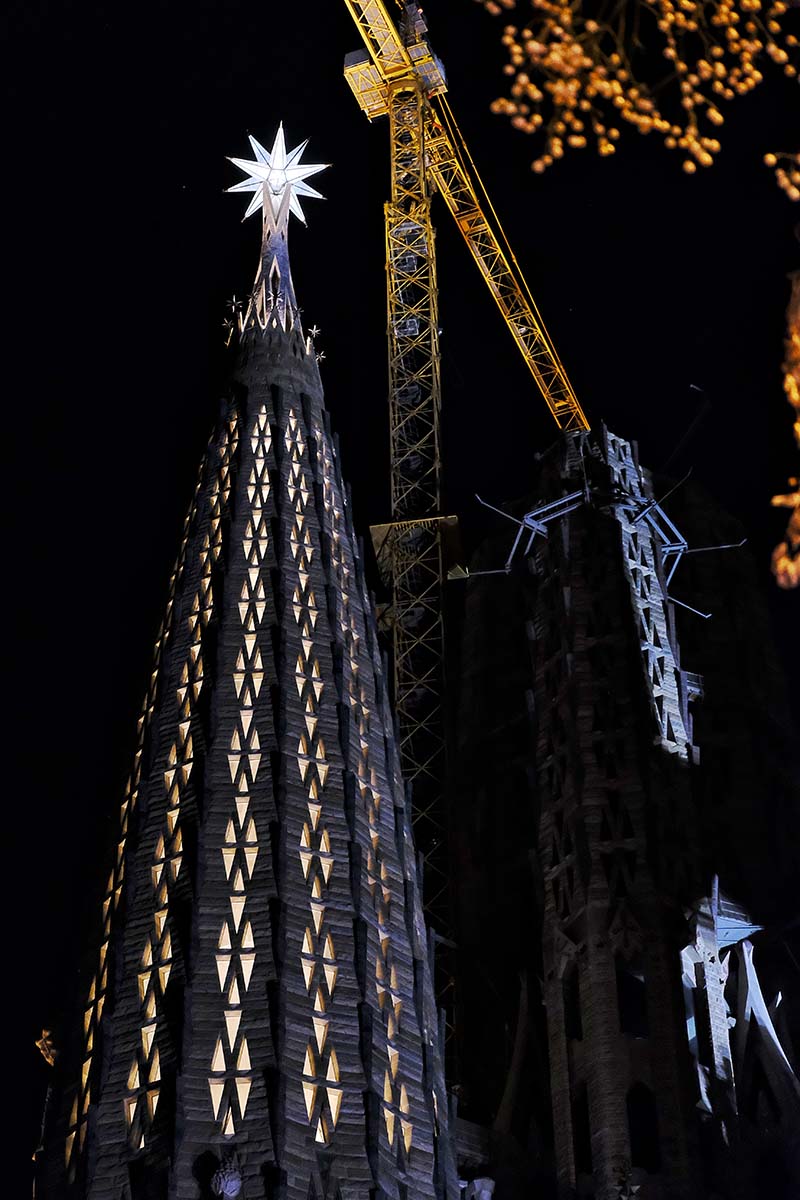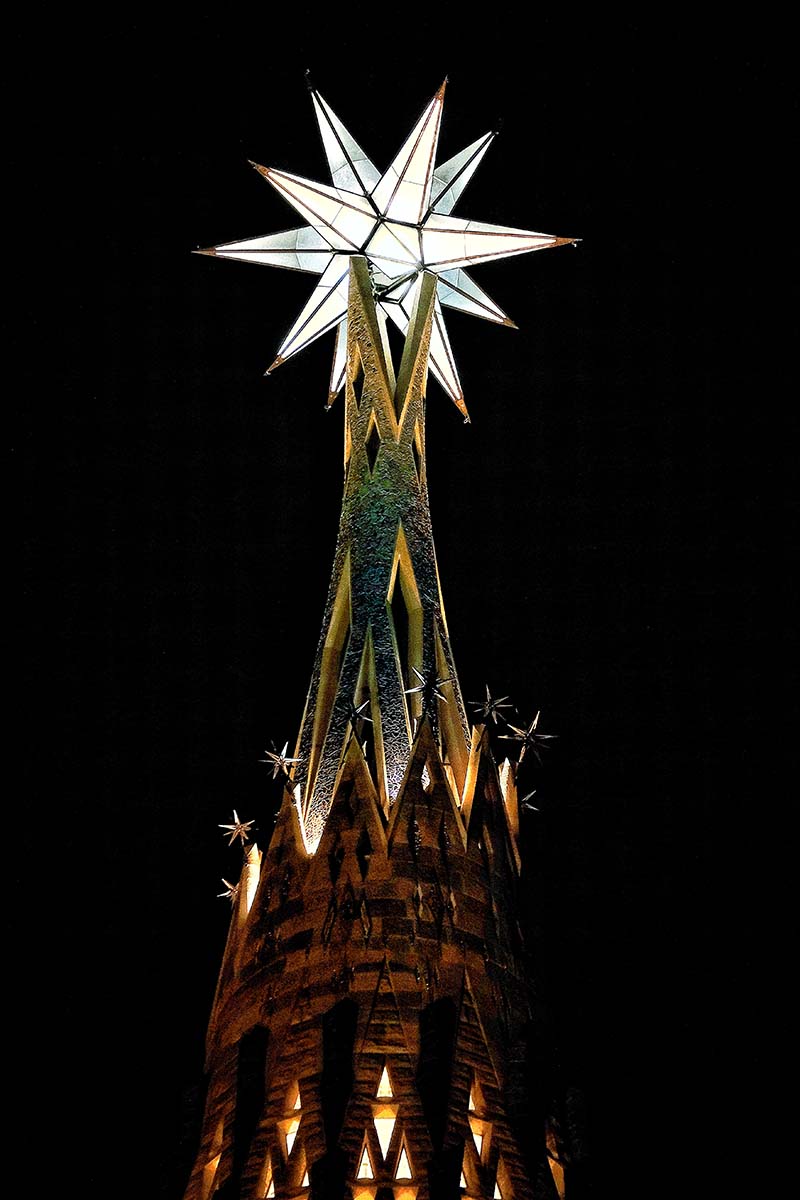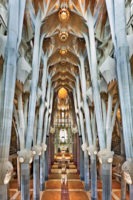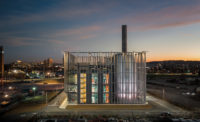A stainless-steel-and-glass 12-pointed star, illuminated by the German lighting design firm Licht Kunst Licht (LKL), glows atop one of the spires of Antoni Gaudí’s Sagrada Família basilica in Barcelona. In planning the church—a UNESCO heritage site under construction for over 140 years now—the Catalan architect originally stipulated that the “star must be a luminous element at night, and during the day a non-transparent architectural element.” However, Gaudí wrote, “the luminosity...must not be excessive, but rather dim to avoid the architectural dematerialization of the star.” The recently installed element, crowning the 450-foot-tall Tower of the Virgin Mary, consists of 10-foot-long steel-framed pyramidal points with triple-layer glass infill (the top layer of which is textured “artistic glass” made specifically for the project). LKL’s Barcelona office (which is overseeing the master lighting plan for the tower and the entire church) employed miniature LED luminaires for the spire and star that are designed for precision, control, and to withstand lightning impact and the heat of Barcelona’s summers. “The goal is to see the building illuminated but not to see the luminaires,” says LKL project manager Naiara Caballero, of the effort to seamlessly integrate luminaires within Gaudí’s organic forms. “We didn’t want to place our stamp—we just wanted to respect the architecture.”


Photos © Daniele Speranza, click to enlarge.






Post a comment to this article
Report Abusive Comment